 Ultraviolet Off-Axis Parabolic (OAP) Mirrors
Ultraviolet Off-Axis Parabolic (OAP) Mirrors
 TECHSPEC® components are designed, specified, or manufactured by Edmund Optics. Learn More
TECHSPEC® components are designed, specified, or manufactured by Edmund Optics. Learn More
- Enhanced Metallic Coating for High Reflectivity Across Deep UV (DUV) and Visible Spectra
- 190nm Design Wavelength
- <50Å RMS Surface Roughness
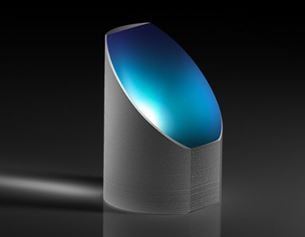 High Performance Fused Silica Off-Axis Parabolic (OAP) Mirrors
High Performance Fused Silica Off-Axis Parabolic (OAP) Mirrors
 TECHSPEC® components are designed, specified, or manufactured by Edmund Optics. Learn More
TECHSPEC® components are designed, specified, or manufactured by Edmund Optics. Learn More
- High Quality Fused Silica Substrate
- <10Å Surface Roughness for Low Scatter
- 90° Offset Angle for Easy Integration
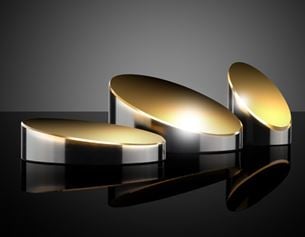 Gold Off-Axis Parabolic Mirrors
Gold Off-Axis Parabolic Mirrors
 TECHSPEC® components are designed, specified, or manufactured by Edmund Optics. Learn More
TECHSPEC® components are designed, specified, or manufactured by Edmund Optics. Learn More
- Bare or Protected Gold Coating for NIR and IR Applications
- 50Å and 100Å Surface Roughness Options
- 15°, 30°, 45°, 60°, or 90° Offset Angles
- Aluminum and Silver Coated Mirrors Also Available
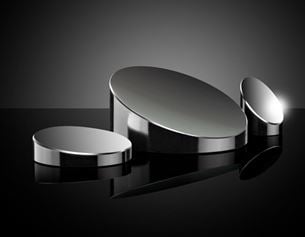 Aluminum Off-Axis Parabolic Mirrors
Aluminum Off-Axis Parabolic Mirrors
 TECHSPEC® components are designed, specified, or manufactured by Edmund Optics. Learn More
TECHSPEC® components are designed, specified, or manufactured by Edmund Optics. Learn More
- Aluminum Coatings for UV, Visible, and NIR Applications
- Range of Surface Roughness, Including 50Å and 100Å
- 15°, 30°, 45°, 60°, or 90° Offset Angle Options
- Gold and Silver Coated Off-Axis Parabolic Mirrors Also Available
 Silver Off-Axis Parabolic Mirrors
Silver Off-Axis Parabolic Mirrors
 TECHSPEC® components are designed, specified, or manufactured by Edmund Optics. Learn More
TECHSPEC® components are designed, specified, or manufactured by Edmund Optics. Learn More
- Protected Silver Coating for Visible and IR Application
- 100Å Surface Roughness
- 90° Offset Angle
- Aluminum and Gold Coated Off-Axis Parabolic Mirrors Also Available
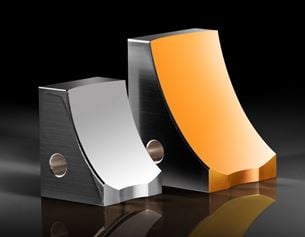 Off-Axis Ellipsoidal Mirrors
Off-Axis Ellipsoidal Mirrors
 TECHSPEC® components are designed, specified, or manufactured by Edmund Optics. Learn More
TECHSPEC® components are designed, specified, or manufactured by Edmund Optics. Learn More
- <100Å Surface Roughness for Low Scatter
- Diamond Turned Alignment Surfaces
- Ideal for Finite Conjugate Reflection
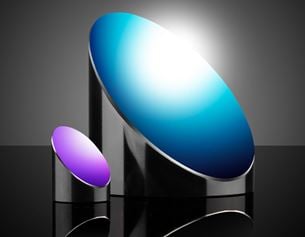 Laser Line Coated Off-Axis Parabolic (OAP) Mirrors
Laser Line Coated Off-Axis Parabolic (OAP) Mirrors
 TECHSPEC® components are designed, specified, or manufactured by Edmund Optics. Learn More
TECHSPEC® components are designed, specified, or manufactured by Edmund Optics. Learn More
- Dielectric Laser Line Coatings for 532 and 1064nm
- Ideal for Collimating or Focusing Nd:YAG Laser Light
- >99.5% Reflectivity at Nd:YAG Design Wavelengths
- Metallic Coated Off-Axis Parabolic Mirrors Also Available
 Ultrafast-Enhanced Silver Coated Off-Axis Parabolic (OAP) Mirrors
Ultrafast-Enhanced Silver Coated Off-Axis Parabolic (OAP) Mirrors
 TECHSPEC® components are designed, specified, or manufactured by Edmund Optics. Learn More
TECHSPEC® components are designed, specified, or manufactured by Edmund Optics. Learn More
- Ultrafast-Enhanced Silver Coating for Ti:sapphire and Yb:doped Lasers
- Low Group Delay Dispersion
- <50Å RMS Surface Roughness to Minimize Scatter
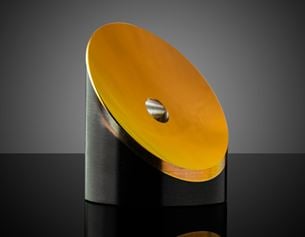 Off-Axis Parabolic Mirrors with Alignment Through Holes
Off-Axis Parabolic Mirrors with Alignment Through Holes
 TECHSPEC® components are designed, specified, or manufactured by Edmund Optics. Learn More
TECHSPEC® components are designed, specified, or manufactured by Edmund Optics. Learn More
- Through Holes Parallel to Focused and Collimated Beams
- Range of Metallic Coatings Available
- <50Å RMS Surface Roughness
 High Performance Off-Axis Parabolic Mirrors
High Performance Off-Axis Parabolic Mirrors
- High Quality Glass Substrate
- λ/4 or λ/2 Surface Accuracy
- Ideal for UV and Visible Applications















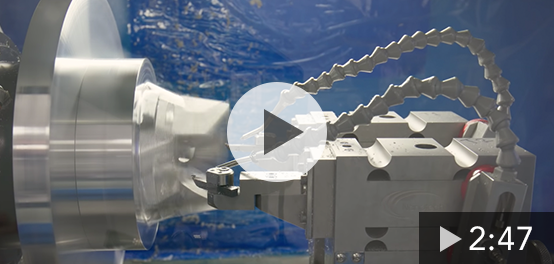
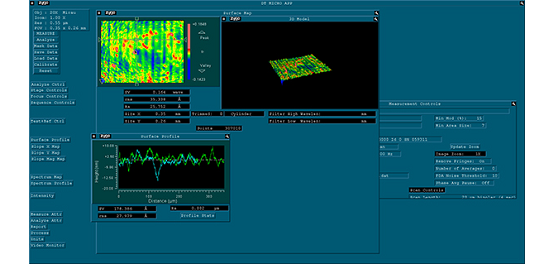
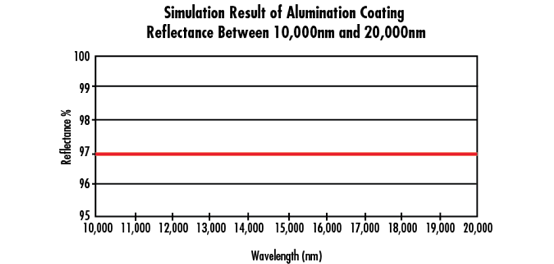
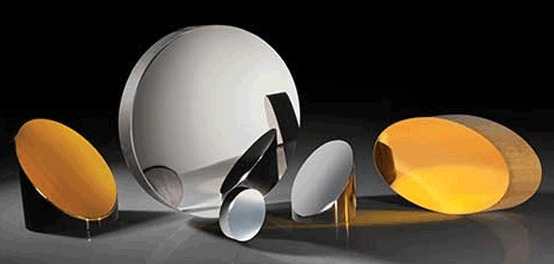

or view regional numbers
QUOTE TOOL
enter stock numbers to begin
Copyright 2024, Edmund Optics Singapore Pte. Ltd, 18 Woodlands Loop #04-00, Singapore 738100
California Consumer Privacy Acts (CCPA): Do Not Sell or Share My Personal Information
California Transparency in Supply Chains Act